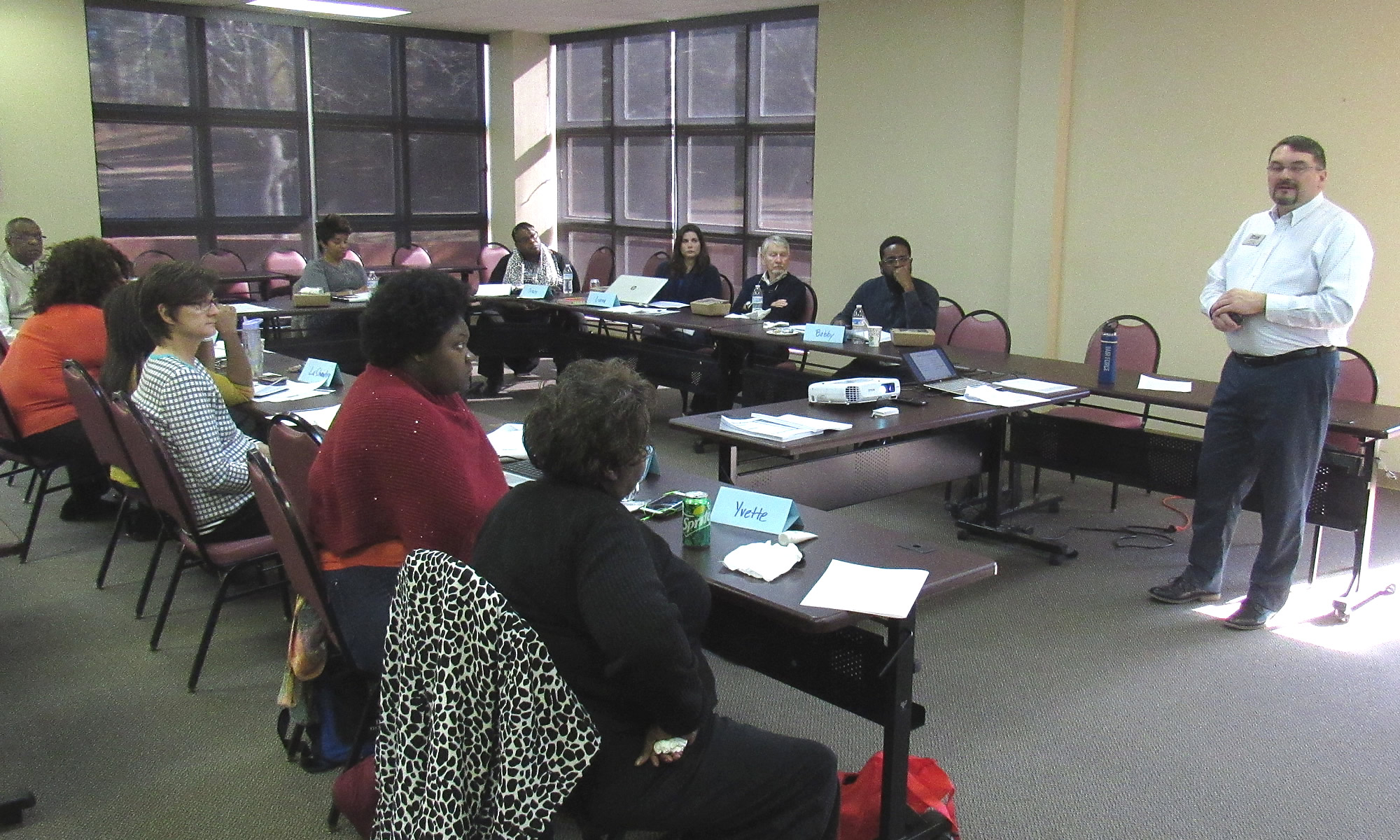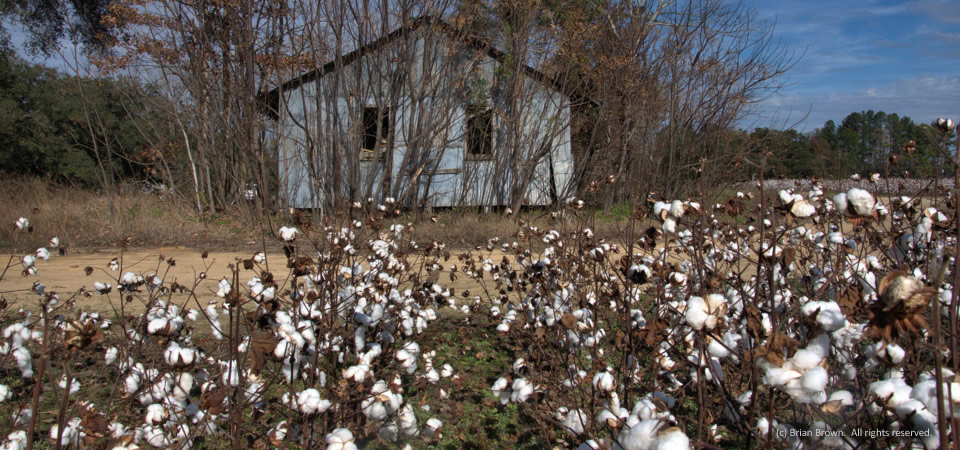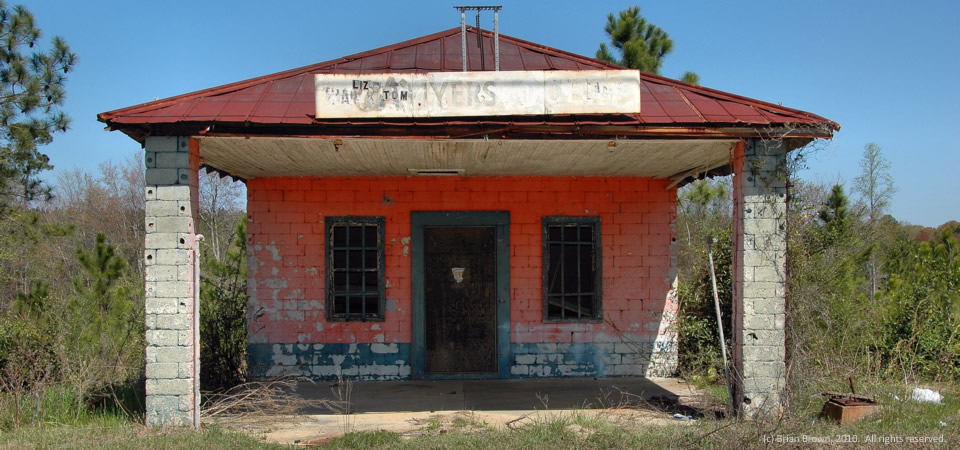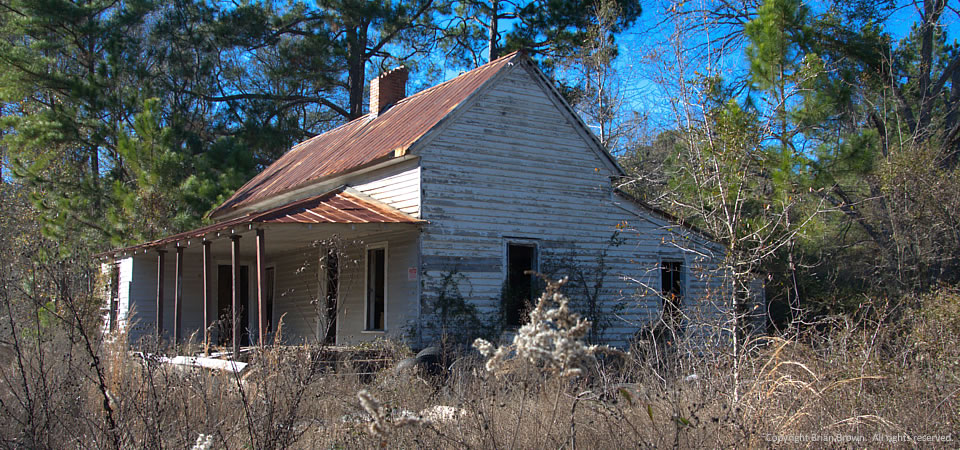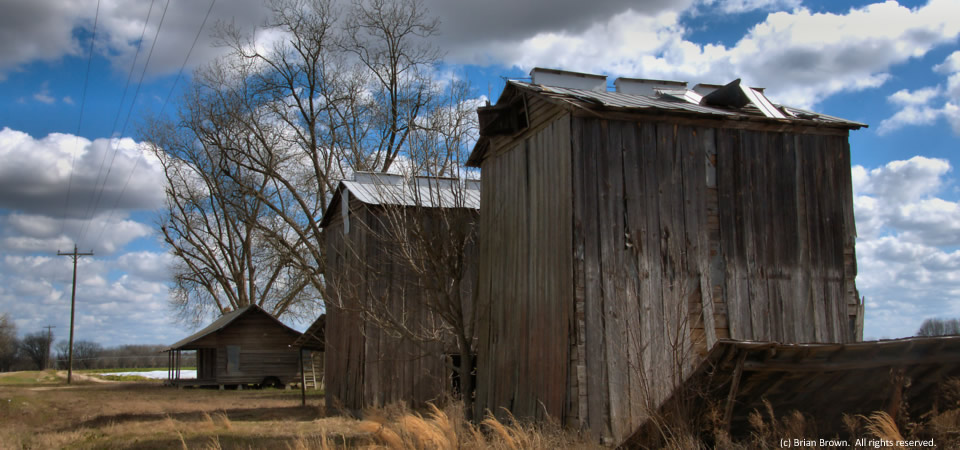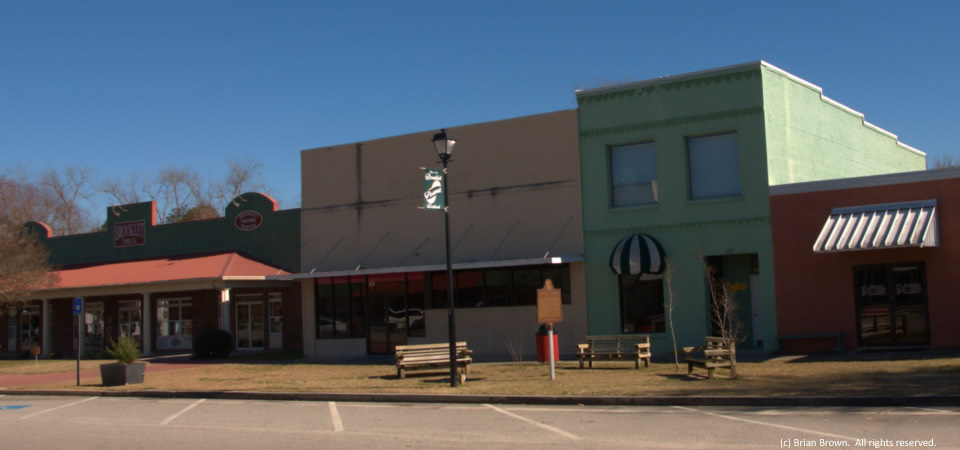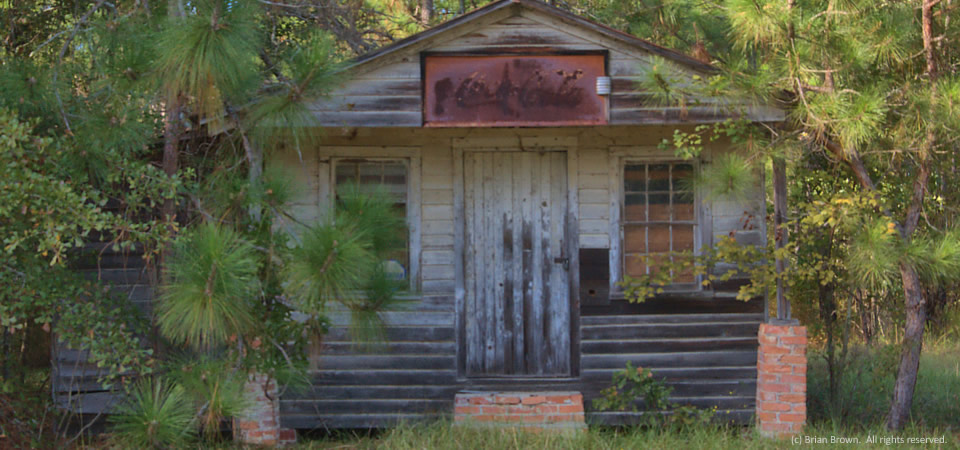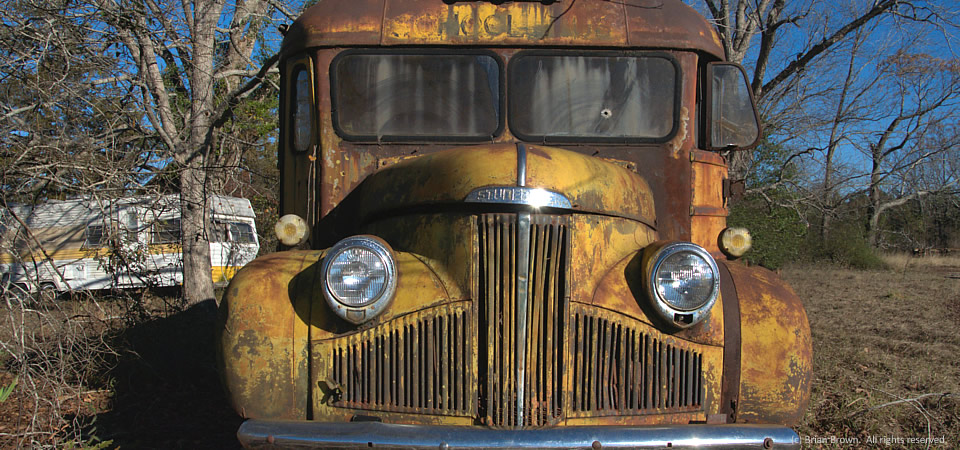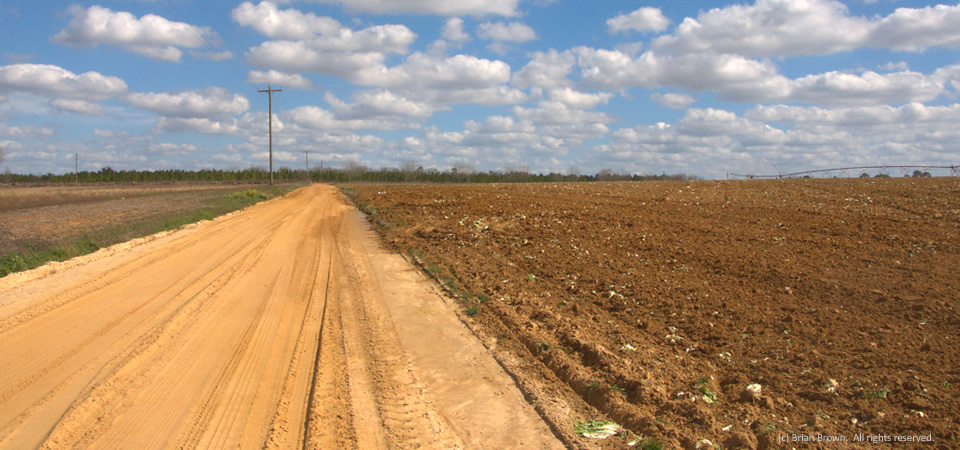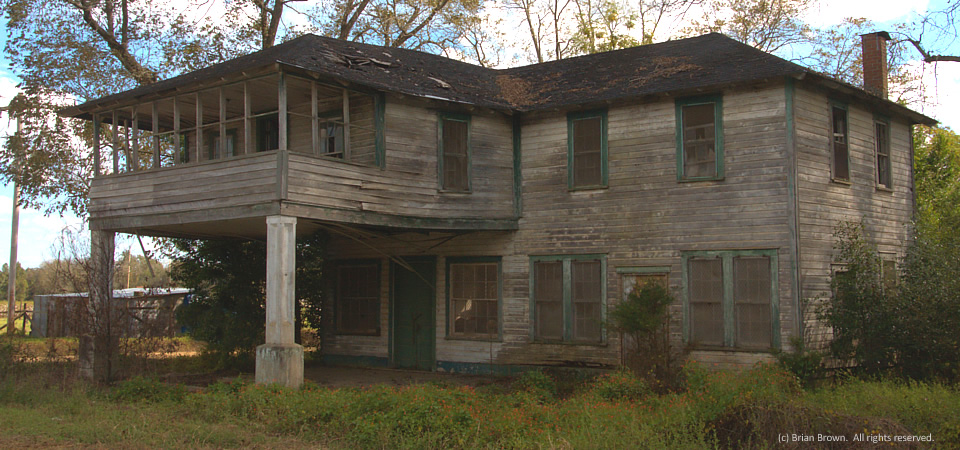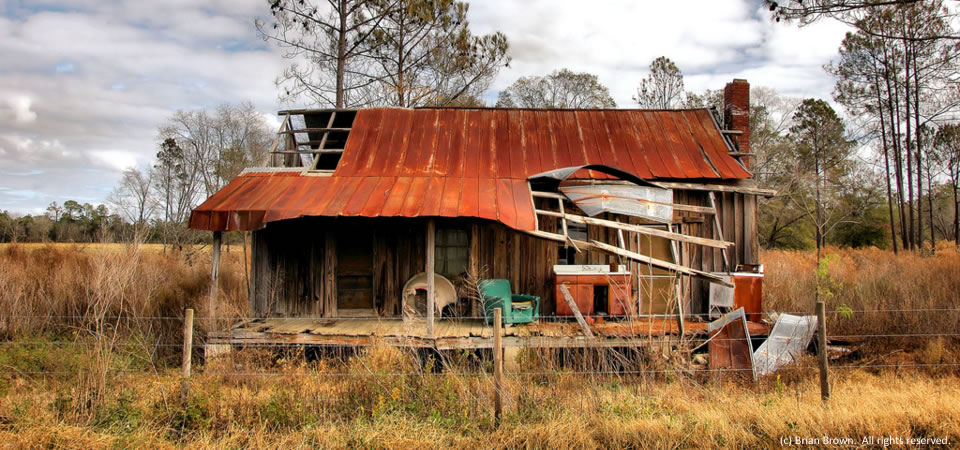
This old tenant farmhouse in wiregrass country along Champion Road in rural Worth County gives a lot of perspective about the decay in infrastructure across the rural South. The photo by VanishingSouthGeorgia.com‘s Brian Brown shows a rusting sink, a rusting washing machine and a sagging green chair as a rusted tin roof threatens to topple onto the porch.
Worth County is located between Albany and Tifton in the central part of South Georgia. The county is home to Peter Pan Peanut Butter. Every jar made is produced in the county seat, Sylvester.
The county had about 21,300 people in 2013, according to the Census with whites representing 68.7 percent and blacks being 29.6 percent. Some 22 percent of people live below poverty levels, according to Census figures.
Photo by Brian Brown from VanishingSouthGeorgia.com is copyrighted. Originally posted on this site in June 2014. All rights reserved
